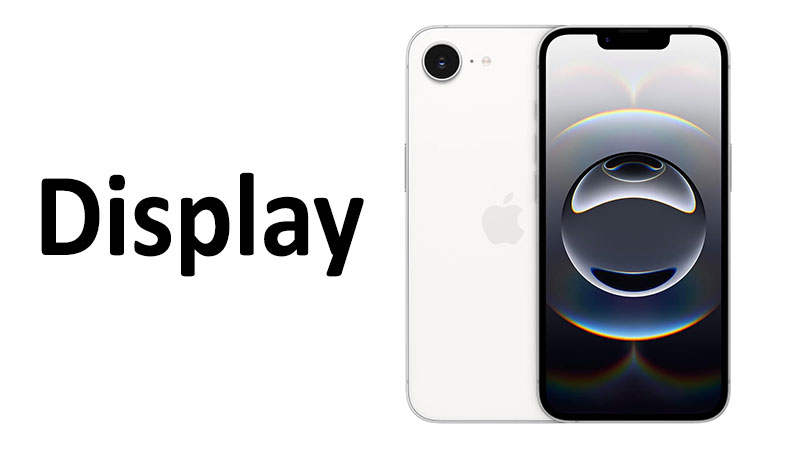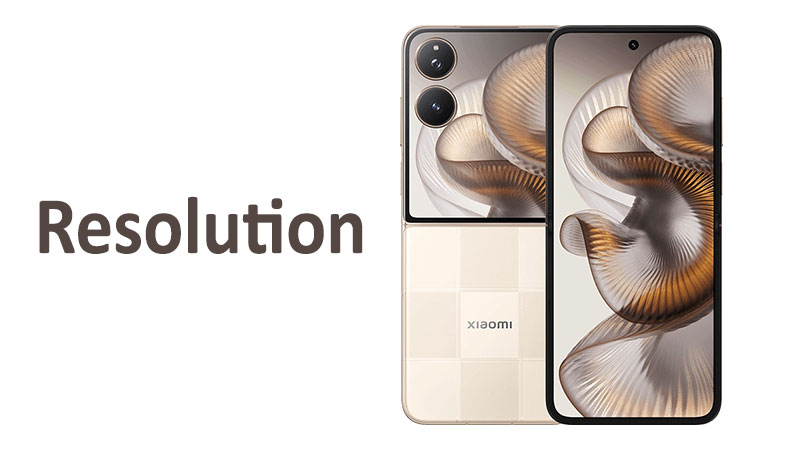The display is one of the most critical components of any smartphone. It is the primary way we interact with our devices. It dictates our experience with apps, videos, and games. The Apple iPhone 16e is a key entry in Apple’s lineup. Its display is a central part of its appeal. This comprehensive article will explore the Apple iPhone 16e display. We will examine its resolution, quality, and key features. We will also compare it to previous models and competitors. This will help you understand if the iPhone 16e’s display meets your needs.
Unpacking the iPhone 16e’s Super Retina XDR OLED Display
The iPhone 16e comes equipped with a 6.1-inch Super Retina XDR OLED display. This technology is a significant step up from older LCD panels. OLED stands for Organic Light-Emitting Diode. Each pixel in an OLED screen produces its own light. This allows for perfect blacks. When a pixel is black, it is truly off. This creates an infinite contrast ratio.
This is a key advantage over traditional LCDs. LCD screens use a backlight. Even when displaying black, the backlight is still on. This results in a grayish black, which is not as deep. The iPhone 16e’s OLED panel provides stunning color accuracy. Colors appear vibrant and true to life. This is great for viewing photos and videos.
Resolution and Pixel Density: A Closer Look
The iPhone 16e display has a resolution of 1170 x 2532 pixels. This results in a pixel density of approximately 457 ppi (pixels per inch). This high density means that individual pixels are virtually indistinguishable to the human eye. Text appears crisp and sharp. Images and videos are rendered with fine detail.
The resolution is slightly different from the base iPhone 16. The standard iPhone 16 has a resolution of 2556 x 1179 pixels. However, the difference in everyday use is minimal. The iPhone 16e’s display is still exceptionally sharp. Its high ppi density ensures a premium viewing experience.
Comparison with the iPhone 15:
The iPhone 16e’s display is quite similar to the iPhone 15’s. Both phones have a 6.1-inch Super Retina XDR OLED screen. They share a very similar resolution. This means that users upgrading from an iPhone 15 will find the display quality familiar. It’s an incremental improvement in some areas. But it is not a revolutionary change. The core display technology remains consistent.
Comparison with Competitors:
Many Android phones in a similar price range offer high-resolution OLED displays. Some may even have a slightly higher ppi. The iPhone 16e’s display holds its own. Its color calibration and HDR performance are top-tier. Apple’s software optimization ensures a smooth and consistent visual experience. Some competitors may offer higher refresh rates. But the iPhone 16e’s overall quality is excellent.
Brightness: HDR and Peak Performance
The iPhone 16e’s display offers impressive brightness levels. It has a typical maximum brightness of 800 nits in high brightness mode (HBM). This is important for outdoor use. The screen remains easily visible even in bright sunlight.
For HDR content, the display can reach a peak brightness of 1200 nits. This makes HDR videos and photos pop. The contrast between bright and dark areas is greatly enhanced. This provides a more immersive viewing experience. The brightness levels are a key feature of the iPhone 16e display. They contribute to its high quality.
Durability: The Ceramic Shield
The front of the iPhone 16e is protected by Ceramic Shield glass. This is a significant durability feature. Apple introduced Ceramic Shield a few years ago. It is made by infusing glass with nano-ceramic crystals. This makes the screen much tougher. It offers four times better drop performance than previous iPhone generations.
The Ceramic Shield provides excellent scratch resistance as well. It has a Mohs hardness level of 4. This means it can withstand scratches from most common materials. It is an important point for potential buyers. The iPhone 16e’s display is not only beautiful but also very resilient.
Display Features: HDR10 and True Tone
The iPhone 16e display supports HDR10 and Dolby Vision. HDR10 is a standard for High Dynamic Range content. It allows for a wider range of colors and brighter highlights. Dolby Vision is Apple’s preferred HDR format. It provides even more detail and accuracy. Both are essential for a cinematic viewing experience.
The display also includes True Tone technology. True Tone automatically adjusts the display’s color temperature. It uses ambient light sensors to match the light in your environment. This makes the screen look more natural and easier on the eyes. It is a feature that once you experience it, you can’t go without.
The Pros and Cons of the iPhone 16e Display
Pros:
- Stunning Visuals: The Super Retina XDR OLED panel delivers vibrant colors and deep blacks. It offers an exceptional viewing experience.
- High Resolution: The 1170 x 2532 pixel resolution provides a high pixel density. This results in sharp and detailed images.
- Excellent Brightness: With up to 1200 nits peak brightness, HDR content looks amazing. The display is also very usable in direct sunlight.
- Superior Durability: The Ceramic Shield glass offers robust protection against drops and scratches.
- HDR Support: HDR10 and Dolby Vision support ensures that movies and TV shows are displayed as intended by creators.
Cons:
- No ProMotion: The iPhone 16e display has a standard 60Hz refresh rate. It lacks the ProMotion technology found on Pro models. This means the animations and scrolling are not as smooth.
- Static Notch: The phone features a traditional notch. It does not have the Dynamic Island. The Dynamic Island provides interactive notifications. This is a feature of the more expensive iPhone 16 models.
- Incremental Update: For users of the iPhone 14 or 15, the display is not a major leap forward. The core technology and features are largely the same.
Important Points for the Buyer
When considering the iPhone 16e, the display is a major factor. If you are upgrading from an older iPhone (like the iPhone 11 or SE), the display will feel like a massive upgrade. The move to OLED is transformative. The colors, contrast, and brightness will be far superior.
If you are a mobile gamer or value ultra-smooth scrolling, the lack of ProMotion might be a deal-breaker. Many competing Android phones offer 90Hz or 120Hz refresh rates at a similar price. The standard 60Hz rate on the iPhone 16e is still perfectly fine for most users. But for those who have used a higher refresh rate screen, the difference is noticeable.
The durability of the Ceramic Shield is a significant selling point. It gives a buyer peace of mind. It helps protect the phone from everyday accidents. This can save on costly repair fees.
Conclusion
The Apple iPhone 16e display is a fantastic component of this smartphone. It offers a beautiful, high-resolution Super Retina XDR OLED panel. The colors are vibrant and the blacks are truly deep. Its brightness levels are excellent, especially for HDR content. The inclusion of Ceramic Shield glass makes it one of the most durable displays in its class.
While it lacks some premium features like a high refresh rate and Dynamic Island, its core performance is stellar. For the average user, the iPhone 16e display provides a brilliant visual experience. It is a compelling reason to choose this phone. It perfectly balances high quality and a more accessible price point.
FAQ
What is the resolution of the Apple iPhone 16e display?
The iPhone 16e display has a resolution of 1170 x 2532 pixels. This provides a sharp and detailed viewing experience.
Does the iPhone 16e have ProMotion technology?
No, the iPhone 16e does not have ProMotion. Its display operates at a standard 60Hz refresh rate. This differs from the Pro and Pro Max models.
What kind of glass protects the iPhone 16e screen?
The iPhone 16e is protected by Ceramic Shield glass. This material is infused with ceramic crystals. It provides enhanced durability against drops and scratches.
How bright is the iPhone 16e display?
The display has a typical brightness of 800 nits in HBM. It can reach a peak brightness of 1200 nits when viewing HDR content.
Does the iPhone 16e display have Dynamic Island?
No, the iPhone 16e features a traditional notch at the top of the screen. The Dynamic Island is a feature reserved for the more premium iPhone models.



